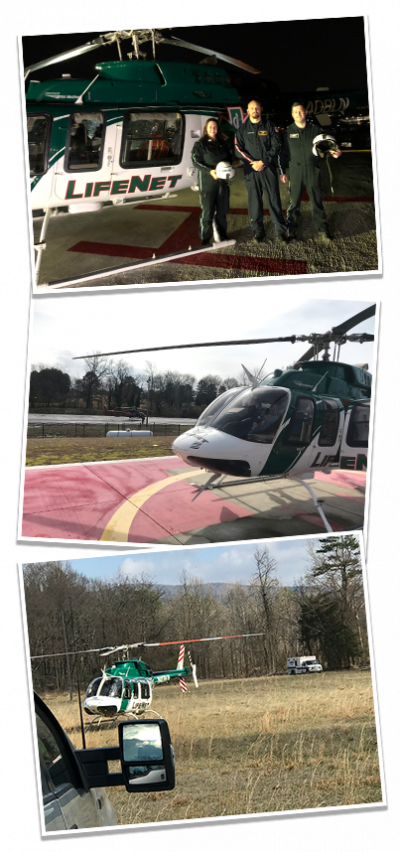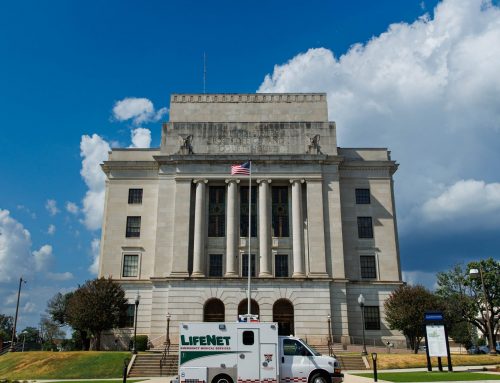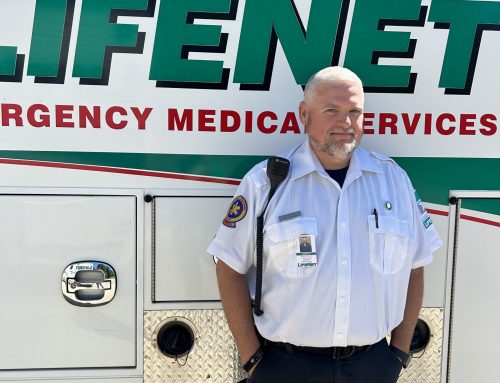Flight crews and pilots with the LifeNet Air 2 base in Hot Springs, Arkansas, recently completed their 1500th patient flight since the base first opened in November of 2013.
The milestone flight happened when the air medical service was dispatched from its base at the Hot Springs Airport on Friday, March 22nd to fly a patient from Malvern to Little Rock.
“The primary reason we brought the helicopter to Hot Springs was to improve access to care for victims of traumatic injuries and critical illnesses who needed fast access to medical treatments not available in our service areas. We brought in an experienced medical flight crew, most of whom are still with us today. This milestone is a testament to their dedication to the program,” said Jason Gartner, general manager of LifeNet EMS in Hot Springs.
The LifeNet Air 2 medical helicopter is operated through a partnership with Air Methods, the leading air medical service provider. The team services the Hot Springs, Arkansas region as an extension of medical transportation provided by LifeNet, Inc. Air Methods owns and operates the helicopter and staffs the pilots, while LifeNet provides the medical crew for the helicopter.
“LifeNet has had a longstanding relationship with Air Methods. When we brought the first air medical helicopter to Arkansas in 1983, it was through a partnership with them in our Texarakna Division. When we realized our Hot Springs Division would benefit from having a medical helicopter in 2013, it only made sense to do it through a partnership with them, too,” said Gartner.
Safety is paramount to everything in medical aviation, and LifeNet has an impeccable safety record.
“Everything we do revolves around safety, and each of the 1500 patient transports we have flown from our Hot Springs base has happened without an accident,” said Gartner. “This mirrors the impeccable safety record of the LifeNet Air program in Texarkana, which in total has flown more than 13,000 accident free missions since 1983.”
The LifeNet Air 2 medical helicopter has an impeccable safety record and follows Federal Aviation Administration’s and Air Methods protocols for safety. Air Methods was the first air medical operation in the nation to reach the highest level (Level 4) of the FAA’s voluntary Safety Management System (SMS) program.
“The LifeNet Air 2 four-bladed, Bell 407 helicopter comes equipped with night vision goggles, terrain avoidance system, and real-time weather radar information to help keep the crews and patients safe during flight operations,” said Gartner. “With a cruising speed of 135 knots and an operational range of approximately 150 miles, this helicopter can get patients to definitive care in a fraction of the time it would take to transport them by ground ambulance.”
While the LifeNet Air 2 medical crews and the AirMethods pilots are proud of their safety record and being able to serve patients when they are needed, they also recognize the 1500 flights would not have happened without ground support from a group of dedicated first responders.
“Local volunteer fire departments, ground ambulance crews, and emergency medical responders are usually the first person on the scene before our helicopters arrive. They take care of the patients until we get there and setup and manage our landing zones. Celebrating this milestone is as much about them as it is about our crews,” said Gartner. “We also owe gratitude to the nurses and doctors at hospitals throughout our region who assist us when we are called to transfer their patients to another facility for higher level care.”
The LifeNet Air 2 medical helicopter is staffed by a pilot, a flight nurse, and a flight paramedic, who respond to emergency calls or provide transportation between medical facilities for critically ill or injured patients. LifeNet Air currently operates two bases in Arkansas.







